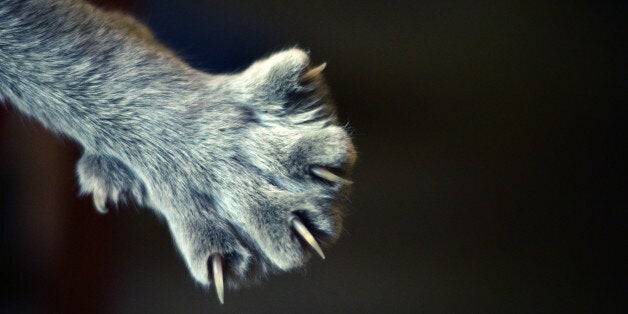
The United States and the United Kingdom are bound together by history, language, and strategic interests, but there is one area where the two countries radically diverge: cats.
Walk through any British village and you'll see cats playing outside as if they were American dogs. And the British dogs are mostly inside as if they were American cats.
Walk through any American town -- or rather, drive, because that's the American way -- and you won't see any cats. There are tens of millions of cats in the States, but they all live indoors, as Nature intended.
My wife and I are Americans living in England and we recently went through the process of rehoming two kittens. Both of us have spent many years in the U.S. with happy, indoor, declawed cats. The idea of keeping outdoor cats with claws sounded clawful, er, awful.
But as respectful ex-patriots we decided to try to adapt to the strange cat-keeping customs of the British people.
The first cat shelter we visited refused to let us adopt one of their cats because we expressed a preference for keeping them indoors. Are you kitten me?! I thought cats liked to be clean, warm, and safe. Upwards of 90 percent of British cats are allowed outside, because apparently they deserve the freedom to get dirty, get fleas, and get run over by a car.
We were told that it's much safer to let cats outside in England because there are no American predators like wolves, cougars, and various other menacing New World beasts. But 1 in 4 British cats is killed by a car. I find it odd that Brits accept those odds.
Indoor cats live longer, healthier lives. And a key ingredient of America's proud tradition of indoor cat-keeping is declawing. Yes, we routinely amputate the distal phalanges of our cats' front paws, thus permanently removing their ability to harm furniture and humans.
When we told the staff of the British cat shelter that we had declawed our cats in the States they cringed in horror as if we had just praised Hitler or pledged support for ISIS.
In the States things appear to be trending in an anti-declawing direction, but the practice is still fairly common. In 2014 the American Veterinary Medical Foundation updated its declawing policy with language that is more circumspect about the procedure and encouraging of alternatives, whilst maintaining that "declawing should remain an option of last resort for veterinarians and pet owners."
A late 2010 survey found that 59 percent of American pet owners believe declawing is acceptable and 32 percent of cat owners have declawed their feline friends.
It seems we Americans regard declawing a bit like we regard using military force -- as a theoretical last resort that we resort to a lot in practice.
The same survey found that only 18 percent would support outlawing declawing. A full 60 percent said they would oppose such a ban, with 36 percent indicating they would "strongly oppose" it.
In the UK, by contrast, declawing was banned by the Animal Welfare Act of 2006. Under the Act, anyone convicted of declawing in the UK could face up to a year in prison and/or £20,000 fine. Across continental Europe the practice is verboten by the European Convention for the Protection of Pet Animals.
Realizing there was no legal way for me to have my cat and declaw it too, and feeling increasingly uneasy with the practice, I logged on to YouTube to watch multiple how-to videos about trimming cat claws. It looked fairly easy, especially if you start trimming when they are kittens.
We proceeded to visit another cat shelter, one that thankfully didn't ask about our indoor vs. outdoor preference. We adopted two wonderfully affectionate kittens, brothers who had been found abandoned together. Despite their rough start, they are downright American in their friendliness and positive outlook on life!
We've found that trimming their claws is quick, simple, and actually kind of fun. We bought them a scratching post, which they love, and they haven't once tried to scratch any furniture or humans. Our sofas and our skin remain unscathed.
Even if the cats do try to scratch, their blunted claws won't be able to cause any damage. The only thing they have damaged is my American confidence in the goodness and necessity of declawing.
I used to cling to declawing as just another quirky aspect of American exceptionalism. But I now see that it may not be an exceptionally good idea.
However, we are retaining our American custom of keeping the cats in the house, away from the dirt and fleas and cars. We are raising Anglo-American cats, keeping their claws and keeping them indoors. So far that seems to be a purrfect fusion.